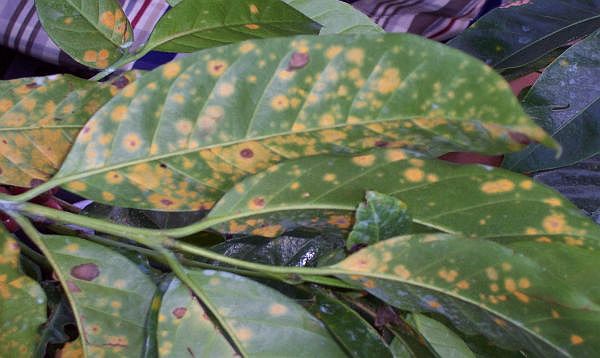Coffee output in Central America and Mexico may tumble as a disease affecting foliage spreads, prompting governments to take emergency measures to protect farms responsible for 14 percent of global production.
Guatemala, Central Americaís second-biggest coffee grower, may lose a third of its crop because of "roya", President Otto Perez Molina said. The crop in Costa Rica may be 30 percent to 40 percent smaller because of the fungus, President Laura Chinchilla said in a separate interview. Coffee exports from Honduras, the regionís biggest grower, will be down 767,000 bags due the roya fungus, the Honduras Coffee Institute said.
Coffee production in Mexico and Central America will be 19.7 million bags in the 2012-13 season that started October 1, 2012 the International Coffee Organization (ICO) estimated in a report in January. That is 2.8 percent lower than the previous forecast of 20.3 million bags, data from the London-based group showed. Farmers around the world will harvest 144.1 million bags, the ICO estimates. A bag of coffee weighs 132 pounds.
"In the next few months when demand increases, the market will realize that the countries south of Mexico to Peru do not have the amounts of coffee expected and that there will be less availability of high-quality coffee," said Ronald Peters, executive director of the Costa Rican Coffee Institute, adding that higher temperatures and below normal rainfall may have helped fuel the outbreak.
The roya fungus can cause the disease "leaf rust," one of the deadliest and most potent diseases that can inflict coffee plants. Should the infection be severe it can potentially kill the coffee plants and require entire crops to be destroyed. The fungus has been detected on the leaves of coffee plants in Mexico, but so far the disease has not been as severe as in countries further south. A dry spell, however, could fan the flames and spread the disease throughout the country and the Mexican government is now stepping up the battle against leaf rust in hopes of preventing a pandemic.
"The roya situation and the potential that next seasonís crops may be impacted is certainly a current focus of the market," Keith Flury, an analyst at Rabobank International in London, said. "If the Central American crop is lower this will affect coffee prices."
Government Aid
The disease will probably spread throughout the region as last yearís slump in prices reduced farmersí income, limiting their ability to pay for chemicals to treat crops.
Guatemalaís government will help growers cope with losses from the foliage-attacking disease, Perez Molina said. Costa Rica will provide aid to farmers affected, said Chinchilla.
"The minister of agriculture briefed us at the last meeting and told us about the impact, which could be very big," Perez Molina of Guatemala said. "The government will help farmers, especially small-and medium-sized ones."
About 17,000 farmers in El Salvador, or 65 percent of producers, will receive aid from the government to fight the outbreak, newspaper El Diario de Hoy reported in January.
The damage in Costa Rica may be "very high," Chinchilla said. The Costa Rican Coffee Institute, known as Icafe, cut the nationís production estimate to 1.648 million bags from a previous forecast of 1.714 million bags. Some farmers have already lost as much as 20 percent of their crop.


